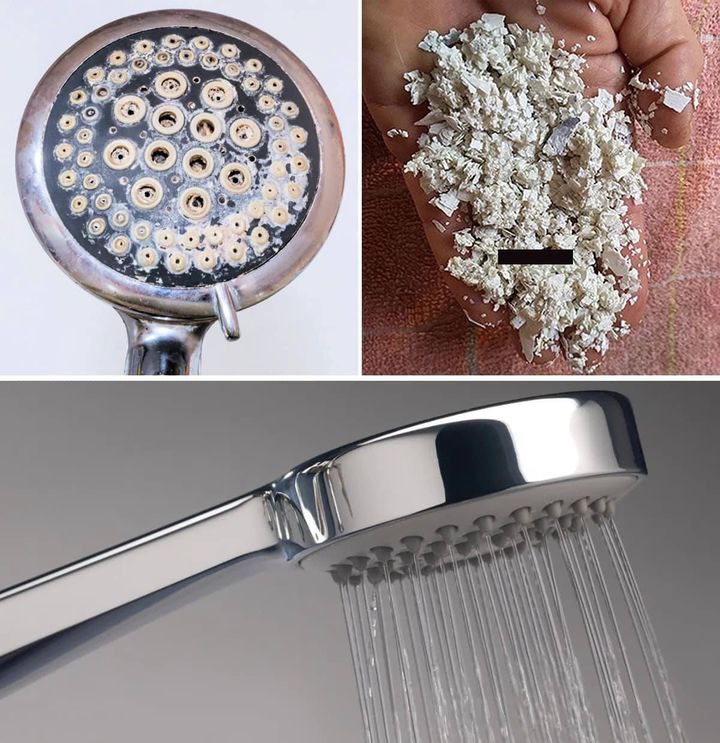ADVERTISEMENT
Once you’ve scrubbed the nozzles, rinse the shower head thoroughly with warm water. This will wash away any loosened minerals, soap scum, and vinegar. If you used a plastic bag to soak the shower head, remove it carefully and rinse the shower head under the faucet.
Once rinsed, dry the shower head with a clean cloth or towel. If you notice any remaining debris or buildup, repeat the cleaning process.
4. Reattach the Shower Head
After thoroughly cleaning the shower head, screw it back onto the shower pipe (if you removed it). Ensure that the connection is tight to avoid leaks. If you didn’t remove the shower head, simply recheck it to ensure it’s securely positioned and that no water leaks when turned on.
Additional Tips for Increasing Water Pressure
If cleaning the holes in the shower head doesn’t fully restore your water pressure, there are a few other things you can try to boost the flow:
1. Check the Shower Head Flow Restrictor
Many modern shower heads come with a flow restrictor, a small device designed to limit the amount of water that flows through to conserve water. While this is an eco-friendly feature, it can sometimes reduce water pressure more than you’d like. If you’re looking for higher water pressure and are okay with using a little more water, you can remove the flow restrictor.
To do this, simply remove the shower head and use a pair of pliers to gently pull out the small flow restrictor from the inside. Be careful not to damage the shower head during the process.
2. Inspect the Shower Valve
If cleaning the shower head doesn’t seem to help, the problem might lie with the shower valve. Over time, shower valves can become clogged or worn, which can reduce water flow. You may need a plumber to inspect and replace the valve if it’s causing low water pressure.
3. Check Your Home’s Water Pressure
In some cases, the issue may not be your shower head but the water pressure in your home. Low water pressure throughout the house could be caused by issues with your plumbing, water main, or water heater. If you’ve noticed that other faucets in your home are also underperforming, it might be worth calling a plumber to assess the water pressure throughout your home.
Conclusion
Cleaning the holes in your shower head is a simple, cost-effective way to restore water pressure and enhance your shower experience. By soaking your shower head in vinegar, scrubbing away mineral deposits, and reattaching it, you can enjoy a cleaner, more powerful shower. If cleaning alone doesn’t do the trick, consider checking the flow restrictor and water valve, or inspecting your home’s overall water pressure.
A little maintenance goes a long way, and with just a few easy steps, you can keep your shower head functioning at its best for years to come.
